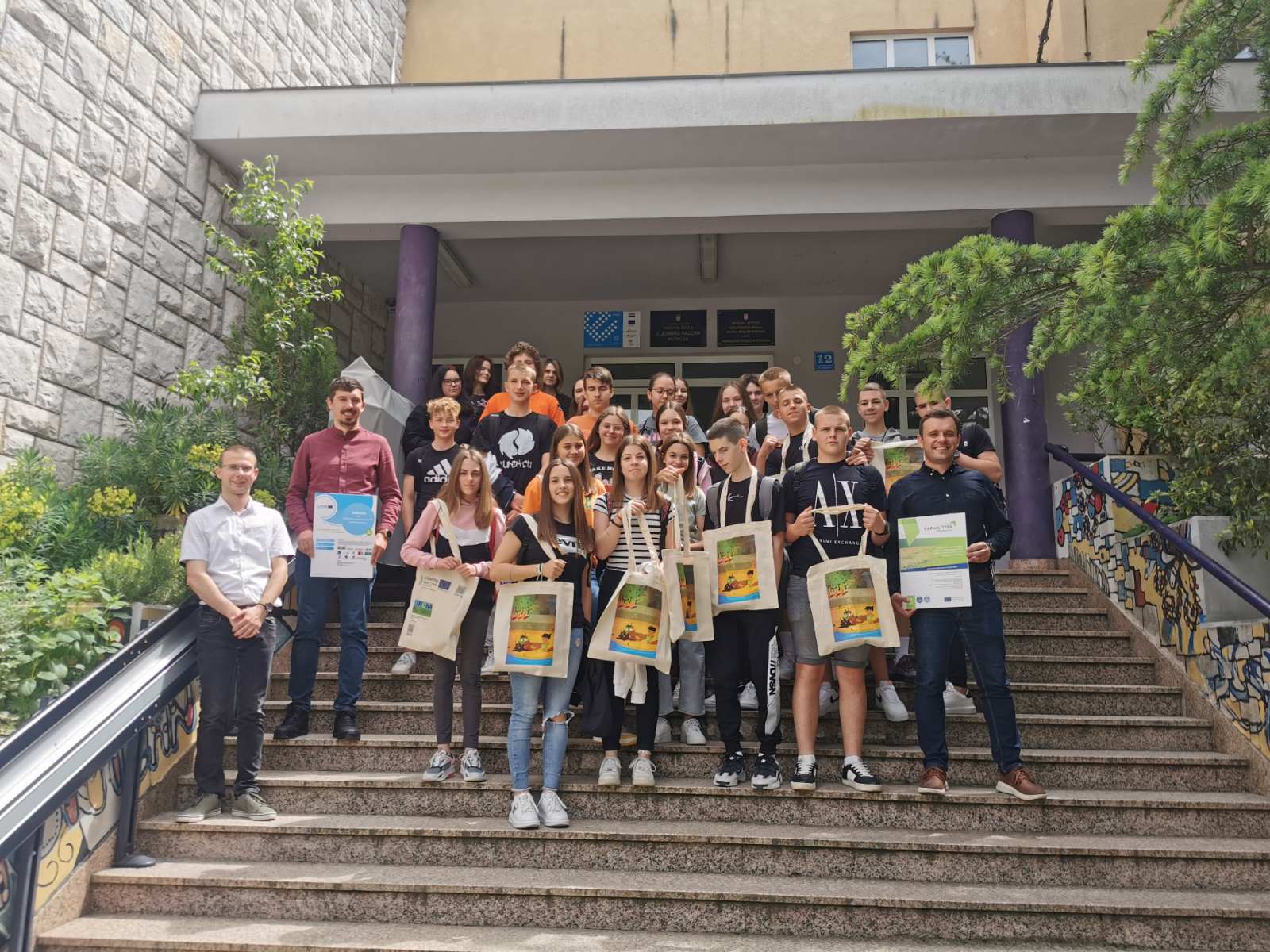Recognising the significant negative environmental and health impacts of single-use plastics, in May 2019 the EU approved a pioneering piece of legislation that aims to curb these products from entering the market and subsequently the natural environment. The Single-Use Plastics Directive (SUP Directive) is specifically important for those local stakeholders that CAPonLITTER project partners work with, given that its aim is to reduce the amount of single-use plastics, which are the biggest source of marine litter within the EU today. According to studies carried out by the European Commission, plastics account for 85% of marine litter found in the EU.
The SUP Directive was proposed in May 2018, as part of the European Strategy for Plastics in a Circular Economy, and in less than one year an agreement was reached to tackle single-use plastics in the EU. The directive aims to prevent and tackle marine litter by, among other things, phasing out unnecessary single-use plastics, introducing economic incentives to reduce consumption and transition to reusable systems, as well as establishing high collection rates. EU Member States are now in the process of transposing this legislation into their own national law, which will determine the extent of this Directive’s impact when it comes to tackling plastic pollution.
What is in the SUP Directive?
The SUP Directive was initiated to tackle single-use plastic items that are most frequently found on beaches, as well as lost and abandoned fishing gear. Single-use plastic items are products made wholly or partially from plastic, and which are primarily conceived to be used only once (or a few times) before they are thrown away. They make up 50% of plastics produced worldwide.
The definition also includes single-use paper items with plastic lining, such as cups and plates made of paper but with a plastic layer (also called plastic-coated paper). It is important to highlight that the SUP Directive also covers single-use plastic items made from bio-based sources, and as well as biodegradable single-use plastics. The SUP Directive establishes different measures that apply to different product categories, depending on various factors, such as the availability of alternatives to these products. The measures include outright bans to reduce consumption of key single-use plastic items and Extended Producer Responsibility schemes (EPR).
Perhaps the standout target established within the SUP Directive is the introduction of an EU-wide ban of single-use plastic cotton buds, straws, plates, cutlery, beverage stirrers, balloon sticks, oxo-degradable plastics, and expanded polystyrene food containers, beverage containers and beverage cups by 2021.
Why is the SUP Directive is important for local stakeholders?
When considering the implementation of the SUP Directive, local measures cannot replace ambitious national or regional transposition, as this responsibility remains in the hands of national governments. Yet, municipalities and cities have a key role to play in speeding-up the transition to zero waste through the adoption of impactful reuse policies and systems at the local level.
Across Europe, many cities and towns are on the frontline of the fight against plastic pollution. Some are becoming plastic-free whilst some are taking more ambitious and important steps towards becoming zero waste, others are banning single-use plastics items altogether and some are implementing deposit systems for food containers. European cities and communities are showing us concrete and replicable examples of solutions that take us closer to a zero waste future, by tackling the over-consumption of plastic.
At Zero Waste Europe, we have created a briefing that provides guidance for local decision makers on the policies they can implement which would help them achieve the targets & requirements of the SUP Directive. The guidance focuses on three main aspects:
- Green public procurement or local ordinances that cities and municipalities can adopt to ban the use of specific single-use plastic items like bags or cups;
- Complementing such bans with environmentally-friendly alternatives, such as the promotion of free tap water or deposit systems for reusable food containers and/or cups;
- Ensuring that the remaining waste is properly collected for recycling via the implementation of financial incentives, such as the adoption of a pay-as-you-throw system.
The ambitious transposition of the Directive into national and regional laws that mirror this vision should be a priority focus for partners involved within the CAPonLITTER project, as well as any stakeholder working to protect Europe’s beaches and oceans from marine plastic litter. Throughout the project, we will be showcasing some of the best examples of how local authorities have risen to the challenge to lead in the fight against plastic pollution.










